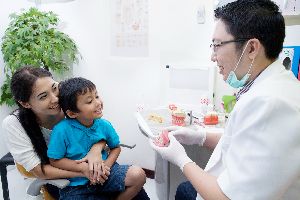How Do Chromogenic Bacteria Affect Children's Teeth?

Maintaining your child’s oral health involves seeing a pediatric dentist twice a year and encouraging daily brushing to protect against plaque and stains. However, certain aesthetic issues can arise, even with your best efforts. Chromogenic bacteria are some of the many staining agents that can affect children’s teeth. The following guide explains more about them and what you can do to keep your child’s smile bright and healthy.
Types of Chromogenic Bacteria Stains
Chromogenic bacteria tooth stains can appear in three ways. One indication of their presence is thin black streaks near your child’s gumline, which can be caused by the use of an oral rinse containing iron. Orange marks appear on both sides of the upper incisors, while green stains only emerge on the front surface of these teeth.
How They Form

Chromogenic bacteria are most prevalent in children. They produce hydrogen sulfide that reacts with the iron content in saliva, causing orange and black stains. Dark discolorations are also types of plaque at higher risk of calcium buildup, which can wear away the enamel and weaken teeth.
Green stains may occur due to inadequate brushing or flossing. A liquid antibiotic known as amoxicillin used during tooth development can also stain teeth and increase chromogenic bacteria activity.
Treatment and Prevention
Since chromogenic stains are extrinsic marks that appear on the surface of your child’s teeth, they are removable with deep cleaning treatments from a pediatric dentist. Routine visits help keep their mouth clean, polished, and stain-free.
Help limit staining by encouraging your child to brush their teeth twice daily and floss at least once a day to remove bacteria. A healthy diet will also assist with dental health. Many foods naturally clean teeth, like apples and celery. However, children should avoid fruit juices and chocolates because they contain staining pigments and tannins.
By allowing your child to develop good oral health habits, you’ll reduce the risk of staining issues and other dental problems, such as tooth decay and gingivitis. Additionally, since bodily bacteria change as children grow up, the chances of chromogenic stains on permanent teeth are low.
If it’s time to schedule your child’s next visit to the pediatric dentist, make an appointment at Pediatric Dentistry Kahala. Based in Honolulu, HI, this practice provides a stress-free environment that makes dental care interesting and fun for kids. From routine cleanings to dental sealant treatments, they will help your child maintain a healthy smile. Call (808) 737-0076 to book an appointment, and visit the pediatric dentist online for more information on their services.
About the Business
Have a question? Ask the experts!
Send your question

